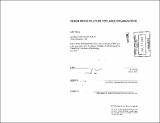| dc.contributor.advisor | Peter Testa.Several design exercises serve to illustrate this alternative approach and its possible impact on the physical spaces in progressive office organizations. These exercises emphasize the visual aspects of communicating temporal relationships, behaviors and design processes. Specific scenarios are also investigated exploring new dynamics and their ability to affect the physical qualities of the design outcomes. By developing a more distributed and iterative approach, the thesis aims to create a new model of workplace design that can foster new interactions, innovation, effective evaluation and collaboration. | en_US |
| dc.contributor.author | Yeung, Luke, 1973- | en_US |
| dc.contributor.other | Massachusetts Institute of Technology. Dept. of Architecture. | en_US |
| dc.date.accessioned | 2012-05-15T21:07:59Z | |
| dc.date.available | 2012-05-15T21:07:59Z | |
| dc.date.copyright | 2001 | en_US |
| dc.date.issued | 2001 | en_US |
| dc.identifier.uri | http://hdl.handle.net/1721.1/70739 | |
| dc.description | Thesis (M. Arch.)--Massachusetts Institute of Technology, Dept. of Architecture, 2001. | en_US |
| dc.description | Includes bibliographical references (leaf 40). | en_US |
| dc.description.abstract | How may design address the conditions of change and creativity in today's workplace environment? Increasingly there is the recognition that in order to develop effective workplaces, the design not only needs to respond to functional requirements but also increase the role of the individual users and suppliers in the ongoing evolution of the office space. Expanding the level of participation in the design and decision-making process increases the level of complexity and requires the re-evaluation of existing design conventions. If the design team chooses to meaningfully engage in these matters, then issues such as the relationship between individual identity and organizational culture, coordination and distribution of resources, and consideration of perceptions and changing behaviors necessarily need to be addressed. The assessment and formulation of these issues generates the basis for th is architectural investigation on a collaborative design process in the workplace. The investigation begins by examining conventional design paradigms in order to articulate some of the limitations in the design process as currently practiced by architects and designers. In particular, design processes that clearly delineate the providers (manufacturers, designers, consultants) from the users (organizations and the employees) are seen as problematic due to the fact that the end users themselves are often excluded from important decision-making transactions. What is needed is an alternative design approach that can engage individual users to continuously shape their office needs and environments with in parameters of a negotiated framework. Despite the added complexity, it is argued that this direction is critical in providing an ongoing and systematic process to accommodate for user interventions and design innovation in today's networked office. | en_US |
| dc.description.statementofresponsibility | Luke Yeung. | en_US |
| dc.format.extent | 41 leaves | en_US |
| dc.language.iso | eng | en_US |
| dc.publisher | Massachusetts Institute of Technology | en_US |
| dc.rights | M.I.T. theses are protected by
copyright. They may be viewed from this source for any purpose, but
reproduction or distribution in any format is prohibited without written
permission. See provided URL for inquiries about permission. | en_US |
| dc.rights.uri | http://dspace.mit.edu/handle/1721.1/7582 | en_US |
| dc.subject | Architecture. | en_US |
| dc.title | Design infrastructure for large organizations | en_US |
| dc.type | Thesis | en_US |
| dc.description.degree | M.Arch. | en_US |
| dc.contributor.department | Massachusetts Institute of Technology. Department of Architecture | |
| dc.identifier.oclc | 49570705 | en_US |
